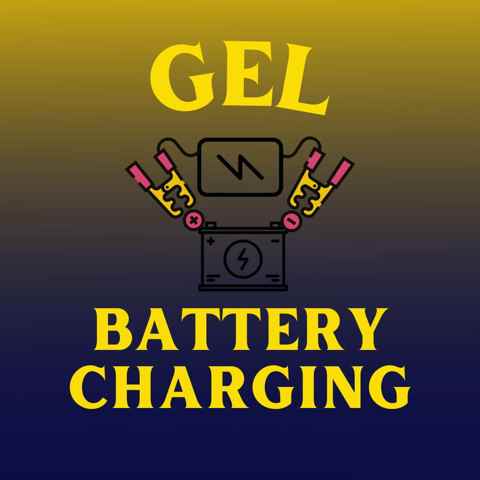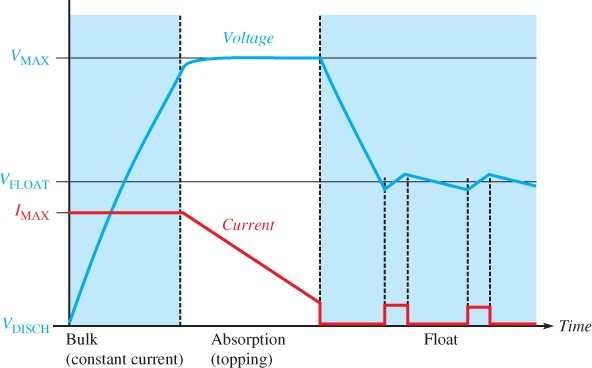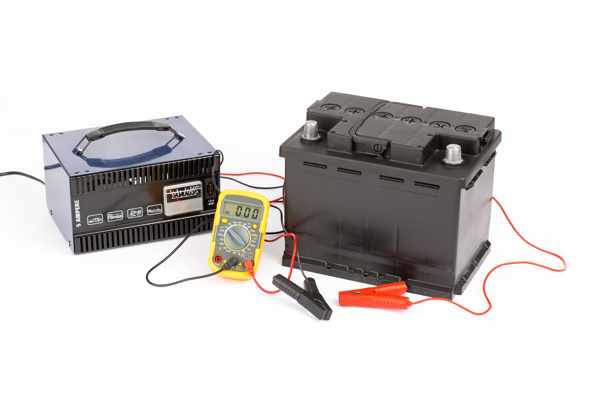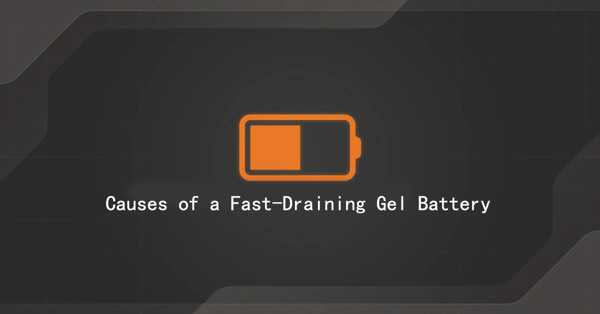What are the disadvantages of a gel battery?
Gel batteries are a popular choice in the lead-acid family, often praised for their maintenance-free convenience. But like any technology, they come with a specific set of trade-offs. If you’re considering a gel battery for your solar system, RV, or backup power needs, it’s crucial to have a clear-eyed view of their potential disadvantages to ensure they’re the right fit for you.
The primary disadvantages of a gel battery are its higher upfront cost compared to traditional flooded lead-acid batteries, its extreme sensitivity to improper charging (which can cause permanent damage), and its typically slower charge and discharge rates. Understanding these limitations is key to getting the performance and lifespan you expect from your investment.

At Gycx Solar, we believe in empowering our customers with knowledge. While we supply various battery technologies, including lead-acid types, our goal is to help you understand the full picture. Let’s explore these disadvantages and other common questions about gel batteries.
Do gel batteries need a special charger?
You’ve invested in a premium gel battery, and you’re ready to charge it. Can you just use any standard battery charger you have in your garage? This is arguably the most critical question to ask, and the answer is definitive.
Yes, absolutely. Gel batteries require a "special" or, more accurately, a smart, compatible charger that has a specific "GEL" charging profile. Using a standard charger designed for flooded lead-acid (FLA) batteries is one of the quickest ways to permanently damage or destroy a gel battery. The charging voltage and methodology must be precisely matched to the battery’s chemistry to ensure its health and longevity.

Dive Deeper: Why the Right Charger is Non-Negotiable
Here’s why a gel-compatible charger is essential:
- Lower Voltage Requirement: Gel batteries are sensitive to high voltage. A proper gel charging profile uses lower voltage setpoints (typically topping out around 14.1V – 14.4V) compared to a flooded battery charger, which might push the voltage to 14.8V or higher.
- Avoiding Destructive Equalization: Many chargers for flooded batteries have an "equalization" mode, which is a controlled overcharge designed to de-sulfate the battery plates. This process is highly destructive to a gel battery. It causes the water in the electrolyte to break down into gas that is vented from the battery. Since the battery is sealed and you cannot add more water, this permanently dries out the gel, ruining its ability to store energy.
- Sophisticated Charging Algorithm: A smart charger with a gel profile uses a multi-stage algorithm (e.g., bulk, absorption, float) that is precisely tailored to what a gel battery needs. It charges efficiently to full capacity and then drops to a safe maintenance voltage.
At Gycx Solar, when we design any system, we ensure the solar charge controller or battery charger is perfectly matched and programmed for the specific battery technology being used. This protects your investment from day one.
Can you trickle charge a gel battery?
You want to keep your gel battery topped up and ready for use, especially if it’s stored for long periods. Can you hook it up to a simple trickle charger? The answer is nuanced: it depends entirely on what you mean by "trickle charger."
You can safely maintain a gel battery with a modern, multi-stage battery maintainer or "tender" that has a gel-compatible profile and a true float mode. However, you should avoid using an old, unregulated "trickle charger." A smart maintainer’s float mode keeps the battery full without overcharging, while a simple trickle charger can slowly "cook" the battery over time, causing permanent damage.

Dive Deeper: Smart "Float" vs. Simple "Trickle"
Understanding the difference is crucial for your battery’s health:
- Smart Maintainer (Float Mode): This is the correct way to maintain a battery long-term. A smart charger completes its full charging cycle and then automatically switches to a "float" stage. In this mode, it drops the voltage to a very low, safe level (e.g., ~13.5V) and will only supply a tiny amount of current to counteract the battery’s natural self-discharge. It keeps the battery ready without the stress of a constant charge.
- Old-Style Trickle Charger: A cheap, basic trickle charger may not be "smart." It might supply a low, but constant, current indefinitely, regardless of the battery’s state of charge. Over weeks or months, this continuous current can lead to overcharging, gassing, and drying out the gel electrolyte1, just like using the wrong primary charger would.
The takeaway: For long-term storage or maintenance, always use a modern battery maintainer that explicitly states it is safe for sealed VRLA or gel batteries.
Can you replace a lead-acid battery with a gel battery?
You’re tired of the regular maintenance of your traditional flooded lead-acid (FLA) battery—checking water levels, cleaning corrosion—and are considering an upgrade to a maintenance-free gel battery. Can you just swap one for the other?
Yes, you can often replace a flooded lead-acid battery with a gel battery, but with one absolutely critical condition: you MUST ensure your entire charging system is compatible with gel chemistry. This means your vehicle’s alternator regulator, your boat’s converter/charger, or your solar charge controller must have a specific "GEL" setting or be replaced with one that does. Simply dropping in a gel battery while using a charger set for flooded batteries will quickly destroy your new investment.

Dive Deeper: The System Compatibility Checklist
If you’re planning this upgrade, here’s what you need to verify:
- Physical Fit: Ensure the new gel battery has similar dimensions and terminal types to fit in the same space.
- Voltage and Capacity: The nominal voltage (e.g., 12V) must be the same. Choose an amp-hour (Ah) rating that meets or exceeds your needs.
- The Critical Charger Audit: This is the most important step.
- Examine Your Existing Charger/Controller: Look for a setting or switch that allows you to select the battery type. If you see options like "Flooded/Wet," "AGM," and "GEL," you’re in good shape.
- If There’s a "GEL" Setting: You can make the swap. Before connecting the new battery, make sure to switch your charger to the "GEL" profile.
- If There’s No Setting: If your charger is a basic model designed only for flooded batteries, it is not compatible. You must replace the charger with a modern, multi-chemistry smart charger at the same time you install the gel battery.
Gycx Solar Story: "This is a frequent consultation we have. A client wanted to replace the FLA batteries in their off-grid cabin with gel for less hassle. We audited their system and found their old solar charge controller wasn’t compatible. We sourced the right gel batteries and a new, correctly-programmed controller. This system-wide approach ensured their upgrade was successful and their new batteries would last."
Why is my gel battery draining so fast?
Is your gel battery not holding a charge for as long as you expect? A battery that seems to drain too quickly can be frustrating, and it’s usually a sign of one of a few common issues.
A gel battery that is draining fast is often the result of either a hidden parasitic load (a device continuously drawing power), internal damage from past overcharging or sulfation, or simply old age and natural capacity loss. Troubleshooting involves checking for power drains and assessing the battery’s health and history.

Dive Deeper: Troubleshooting a Weak Battery
If your battery isn’t lasting, here’s what to consider:
- Parasitic Loads: This is the most common culprit. A small device you’ve forgotten about—a stereo’s memory, a propane detector in an RV, a faulty switch—can be drawing a small but constant current, slowly draining your battery even when you think everything is off. A professional can perform a parasitic draw test with a multimeter to diagnose this.
- Sulfation: If the battery was ever left in a deeply discharged state for an extended period, hard lead sulfate crystals may have formed on the internal plates. This "sulfation" chokes the battery’s ability to accept and hold a full charge, effectively reducing its capacity. This damage is often irreversible in a sealed gel battery.
- Permanent Damage from Overcharging: As we’ve covered, if the battery was previously charged with an incorrect, high-voltage charger, the gel may be permanently damaged. The battery might seem to charge fully, but its actual capacity to store energy is drastically reduced.
- End of Lifespan: All batteries have a finite life. If your gel battery is many years old and has been through hundreds of cycles, it will naturally have less capacity than it did when it was new. The "fast drain" you’re experiencing might simply be the battery reaching the end of its useful service life.
Proper care, especially using the correct charger from day one, is the best way to prevent these issues and ensure your gel battery provides years of reliable service.
A gel battery can be a fantastic, convenient alternative to a traditional flooded lead-acid battery, but it’s not a simple "drop-in" replacement. Its primary disadvantage is a sensitivity to charging that demands the use of a compatible charger. Understanding these trade-offs is key.
Whether you’re considering a durable lead-acid solution or are interested in the superior lifespan and performance of modern lithium technologies, our team at Gycx Solar has the expertise to guide you. We can help you select the right battery and the right charging system to ensure a safe, reliable, and long-lasting energy solution. Contact us today!
Understanding the concept of electrolyte will help you better compare and understand battery-related data concepts. This will help you select the product that best suits your needs from our company. ↩
